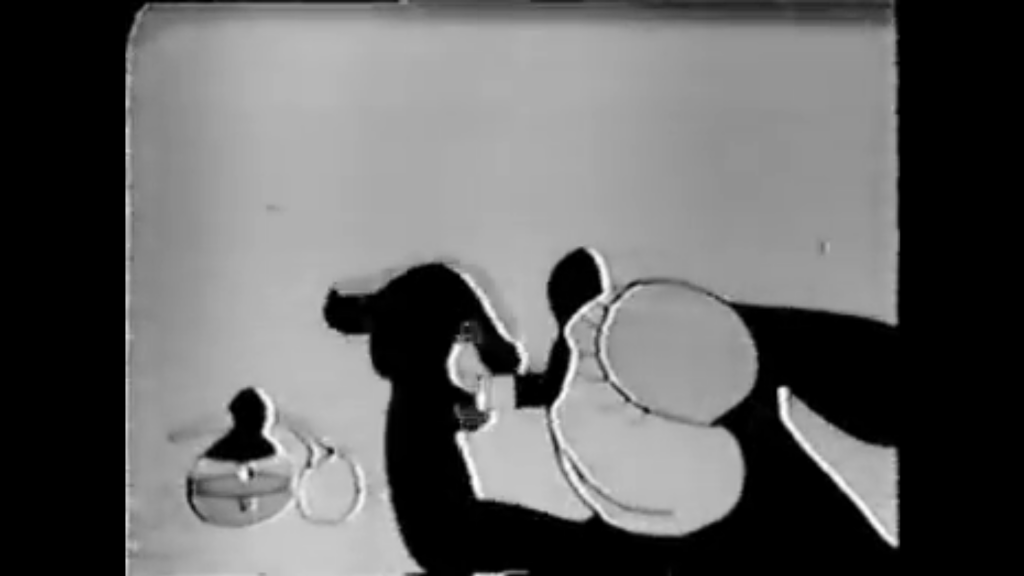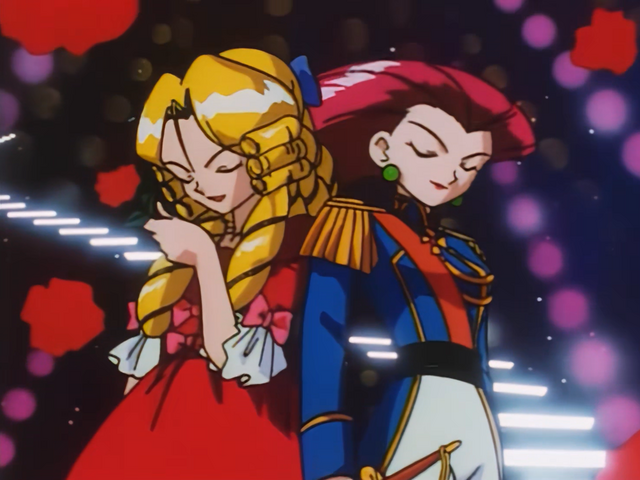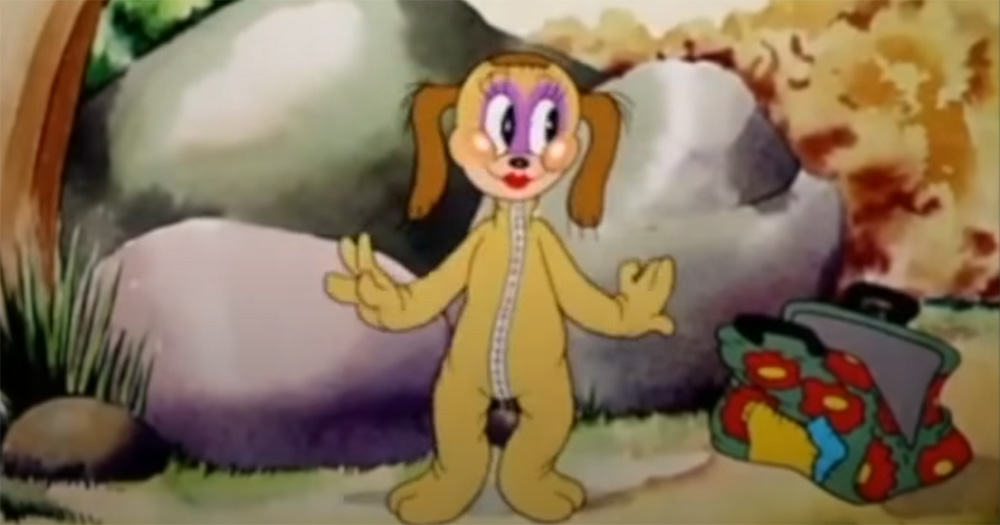Crossdressing appears throughout history all over the world, from London’s club culture in the 18th century to being banned in the US in the late 1800s. When animation came along in the early 1900s, crossdressing was still frowned upon in the US, and animators saw this as a perfect opportunity to add a layer of controversy to their productions.
Animations often featured scenes with ‘shock value’ in the early days, whether it be depictions of drinking, violence, nudity, or more. As crossdressing was considered an adult topic at the time, it wasn’t surprising that animators eventually used it in their cartoons.
In 1929, there was one of the first known depictions of a cartoon character crossdressing. Oswald the Lucky Rabbit was the cartoon star who started to give the Walt Disney company the name it has today. He was seen as peppy, egotistical, and kind of bratty, but it’s what made him so loved.
In the cartoon Oswald in Yankee Clippers, we see Oswald work in a barbershop/nail salon. When one of the villains of the series, Pete, shows up, Oswald disguises himself as a female nail tech by putting on a skirt and doing his makeup.
Already, we can see signs of what would become common in crossdressing cartoons, as when Oswald is dressed as a girl, he is seen beating up Pete, taking advantage of his feminine appearance. We also see Pete force himself onto Oswald as he believes he is a woman, which is meant to be the comedic aspect of the episode (although perhaps does not stand the test of time).
Oswald would go on to crossdress again in the ’30s in Oswald the Lucky Rabbit in the Navy, but soon, other characters started to follow in his footsteps.

Many tend to believe that Bugs Bunny was the first Warner Bros. character to crossdress, but that would be incorrect. The first occurred six years earlier in 1933, with the now obscure male character Buddy in the cartoon Buddy’s Beer Garden.
In this cartoon, Buddy is celebrating the repeal of prohibition by opening a German beer garden. Towards the end of the cartoon, a woman comes onto the screen singing. Another one of the male characters attempts to kiss her, but is bucked away by a goat, also causing the woman’s dress to get caught in a tree. Her clothes begin to fall off, and she is revealed to be the character Buddy from earlier, who ends the episode by slowly strutting off.
This is one of the most interesting examples of crossdressing in early cartoons, as other times, characters had a specific reason to crossdress, and it was usually played up for comedy. Here, though, Buddy is completely disguised and is just singing because he can. Whether intentional or not, this is a relatively positive example of crossdressing and likely one of the first animated examples of a drag queen.

Now, for the character most people know and love, 1939 saw Bugs Bunny crossdressing for the first time in Merrie Melodies Hare-um Scare-em.
This cartoon features a hunter who is furious over the government raising the price of meat, so he decides to hunt his own. A chase starts between a prototype of Bugs Bunny and the hunter, as well as their dog.
Roughly at the halfway point, Bugs dresses up as a female dog to seduce the hunter’s dog. This scene only lasts for a minute or two, but it was a defining point for this character, as when the rabbit would later become Bugs Bunny, a staple of Bugs’ jokes would be that he often crossdresses and kisses men.
This would lead to people labelling Bugs as the drag queen of animation. It became a loved aspect of his character, which gets highlighted in other animations he appears in. There are also statements online that Bugs’ creator, Chuck Jones, realised later on that the character is gender fluid, but there is no source that 100% confirms these claims.

From the 1940s onwards, crossdressing became extremely popular as a form of comedy in cartoons. What usually happened was a known male character would dress up as a woman and do something very feminine or use their looks as a way to trick somebody.
These scenes can be interpreted one way or another, depending on the viewer. Sometimes it was an unknowingly good example of drag and showed how or why a male-presenting character might want to dress more femininely. Other times, these moments can highlight harmful gender stereotypes, with the characters appearing more clumsy, weak, and greedy when they dress and act more feminine.
It is also noticeable that while we have decent documentation of characters dressing up from male to female, there is a lack of female-to-male crossdressers. This is most likely because animation studios didn’t see them as comedic. When it does happen, it is usually just a woman putting on a moustache and doing a poor attempt at a deeper voice.
When anime came to the West, we started to see more examples of female-to-male crossdressers.
Pokémon is an extremely popular series all over the world. It follows a 10-year-old named Ash and his friends as they catch, battle, and evolve creatures called Pokémon, while each having their own life goals.
Pokémon: Indigo League started in the late 1990s. In 1998, the episode ‘Pokémon Fashion Flash’ saw the villains Jessie and James crossdressing, with Jessie presenting as a prince and James as a princess. They would go on to crossdress multiple times throughout the series, while questions may be raised over why this was only a trait of villainous characters.

By the 2000s, crossdressing in animation had become very common, although still mostly used for comedic effect and sometimes to punish male characters. However, viewers were seeing a shift, as when characters did crossdress, they expressed some form of joy, were supported by their peers, or simply felt comfortable expressing themselves in a way they previously hadn’t been able to.
Now, in the 2020s, many cartoons promote non-gendered dressing and LGBTQ+ characters as a whole. A notable example is the Muppets Babies episode ‘Gonzo-rella’, where Gonzo is shown wearing a princess dress and the entire episode is a discussion about gender non-confirming identities.
While episodes like these now often face scrutiny from those who are more right-leaning, there is no denying that crossdressing has always existed in the world and in cartoons.
© 2025 GCN (Gay Community News). All rights reserved.
Support GCN
GCN is a free, vital resource for Ireland’s LGBTQ+ community since 1988.
GCN is a trading name of National LGBT Federation CLG, a registered charity - Charity Number: 20034580.
GCN relies on the generous support of the community and allies to sustain the crucial work that we do. Producing GCN is costly, and, in an industry which has been hugely impacted by rising costs, we need your support to help sustain and grow this vital resource.
Supporting GCN for as little as €1.99 per month will help us continue our work as Ireland’s free, independent LGBTQ+ media.

comments. Please sign in to comment.